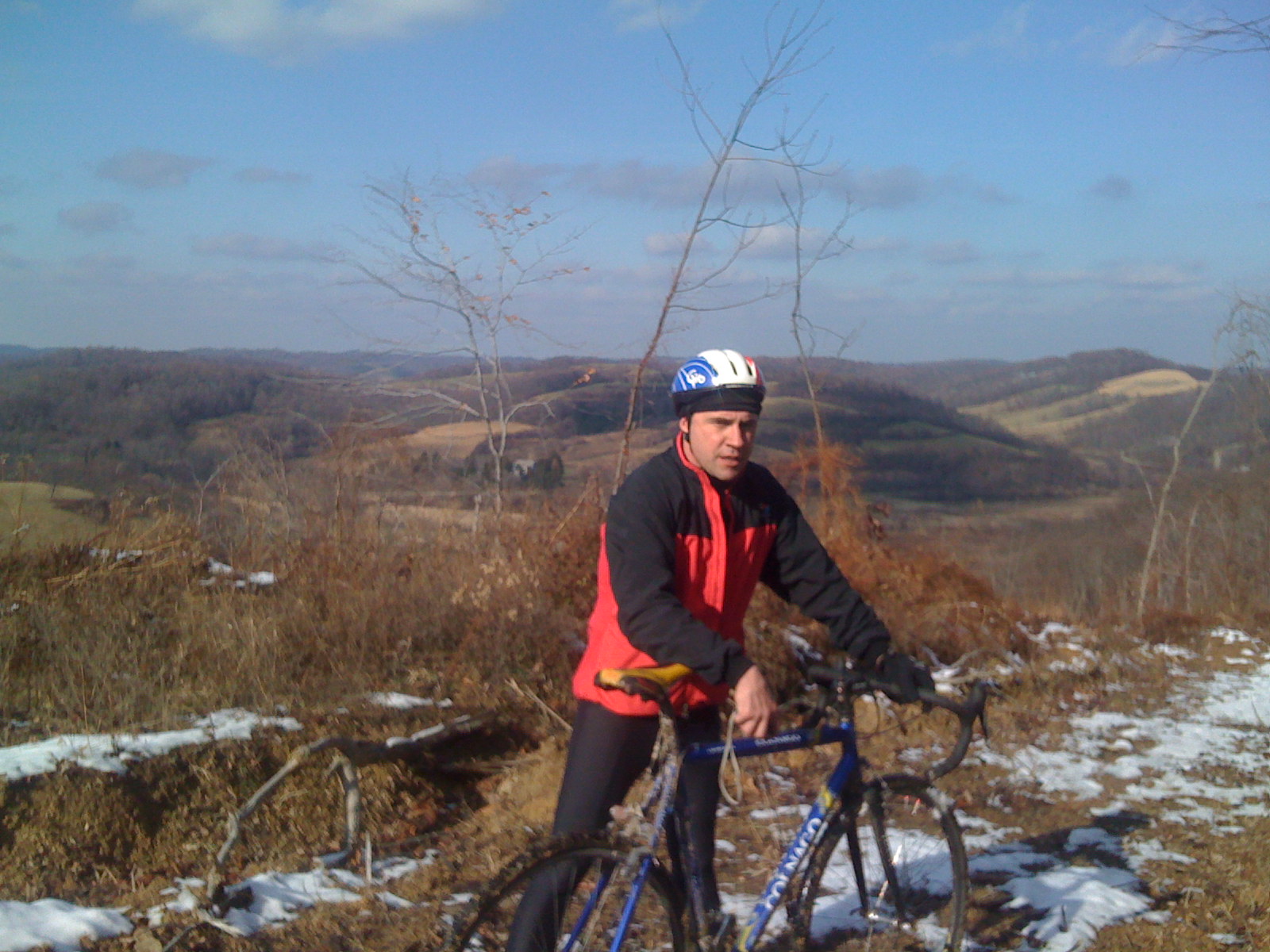Still tired from all the literary acrobatics and the celebration of "take your kids to work day", The Fat Cat did not tackle the mountains Thursday. Instead, he went to the Law school criterium. The Fat Cat promptly flatted right there on the start line. The field failed to return by the time the tire was fixed. It seems the fearless leader of the WVU racing team had done an endo and was on his way to the ER. Poof, that ride was off too. In the end The Fat Cat Noodled around with Piano Dan a bit and then did 5, 20mph laps. Total ride distance, 12 miles.
If you just have to have more reading material, here is something on knee pain. Believe it or not, The Fat Cat is a Diplomate of the American Board of Chiropractic Orthopedists and a Certified Chiropractic Sports Physician. The following is just a reply to a group message and is by no means compehensive not should it take the place of professional evaluation.
Patellofemoral pain syndrome (PFPS) is probably the most common, but not the only, cause of anterior knee pain. Patellar tendinitis, various surrounding bursa, and the menisci (cartilage) are among the differentials. If it is PFPS, there are several factors involved in its causation ranging from physical alignment issues, to bike alignment issues, to training issues. If you have never had a bike fitting from a qualified professional, it would be a good idea.
One of the simplest things to look at with anterior knee pain with relation to cycling is seat height. Typically a seat that is too low can exert excessive force across the patellofemoral complex. You should have about a 10 degree or so bend in the knee when it is at the bottom of the pedal stroke. Pedal on a trainer for a few minutes, stop, and have someone look at the knee angle. When you look yourself you tend to alter the ankle angle and the resulting angle is not your true riding position.
Foot/cleat alignment is another issue. You need to have about 15 or more degrees of "float" in the pedals/cleats to allow some wiggle room for any physical alignment issues that might transfer stress to the knee and to allow for normal biomechanical motion of the lower extremity. The most common anatomical factor involving the foot is pronation (flat feet). You can grossly test this by standing with wet feet on cement. Look to see if you have the "Fred Flintstone" footprint rather than a sort of a "C" shaped print. If you do have pronation issues you can try an over the counter arch support insert first. You made need a professionally casted orthotic.
Type of riding/training is another factor, especially if you have alignment issues. DO NOT REST. There are muscle imbalances at issue in most of these cases and rest can exacerbate these weaknesses. Relative rest is the watch word. It's hard to do in WV, but avoiding hills that you can not spin up at a nice 70 to 90 cadence is a good idea. You should spin at 90 or so cadence in general to exert less force per pedal stroke. Avoid high intensity sprints and limit distance.
As far as treatment, there is a lot we could get into. Being evaluated by a qualified professional is a good idea. Frank's suggestion (A sports physical therapist.) is a good one. As far as simple self treatment options, ice is a good post ride measure. A common weakness involved is of a portion of the quadriceps called the vastus medialis oblique. Its function is to pull/guide the kneecap medially through its sulcus in the femur. If it is dysfunctional, the patella will not glide smoothly along its track which can result in wear and tear and resultant pain. You can do knee extension exercises with the foot turned outward. Tapping just above the medial kneecap to "wake up" the VMO can be helpful. Of, course, stretch the hams and the quads.
There are lots of treatment options beyond the above. Get an evaluation. If you simply must handle this yourself for a while, check the bike position issues, the foot pronation/position issue, ice when it is exacerbated, reduce strain on the knee as mentioned, and do some targeted exercises. This should help in a month or so. If it is still there, get some help.
Oh, I forgot, but you've probably already noticed, sitting with your knees bent at 90 degrees or more can be aggravating due to a bowstring effect. Try to sit with the leg extended and a slight bend in the knee.
Friday, April 25, 2008
Subscribe to:
Post Comments (Atom)




No comments:
Post a Comment